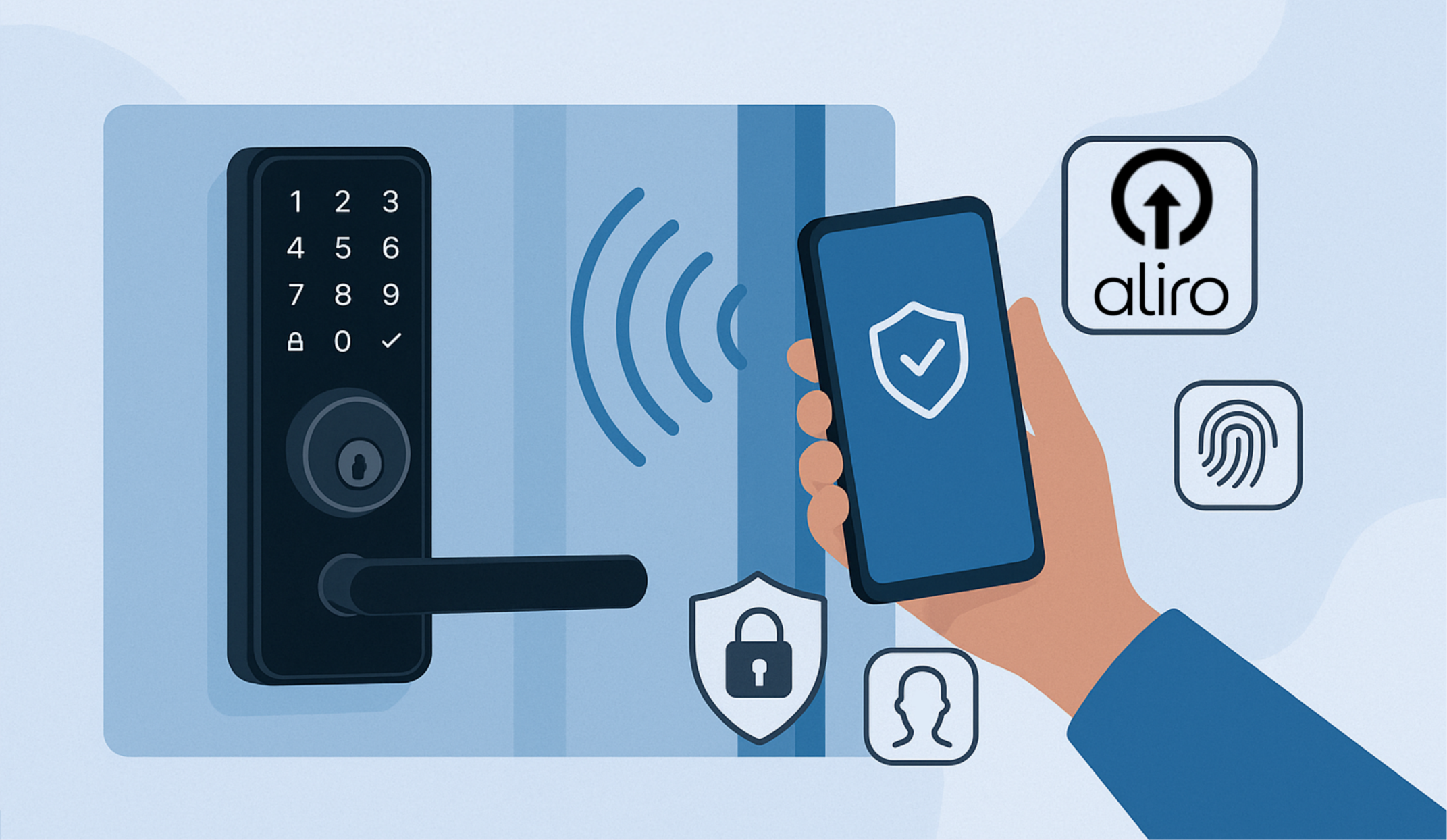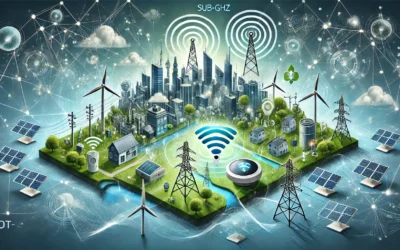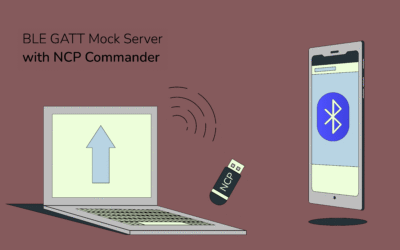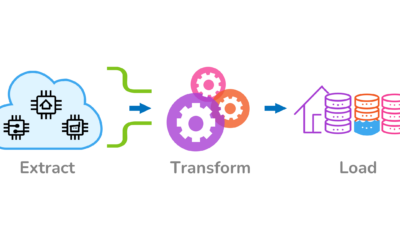Table of Content
- How AIoT Works
- AI in IoT System: Where Data Meets Intelligence
- TinyML: Unleashing AI on Microdevices
- AI/ML at the Edge: The Hardware and Software Foundation
- The Krasamo Advantage: Expertise in Leading-Edge Hardware
- AIoT in Action: Real-World Applications
- From Technical Capability to Business Transformation
The Internet of Things (IoT) is evolving. By embedding Artificial Intelligence (AI) and Machine Learning (ML) into connected devices, we can create intelligent IoT systems that are more than just connected—they’re autonomous. This powerful synergy, often called AIoT, transforms standard IoT devices into assets that can learn, reason, and act on data in real time.
This integration is driving significant market growth. According to Grand View Research, the global AIoT market is projected to reach USD 896.8 billion by 2030, growing at a CAGR of 31.7%. North America currently leads this transformation, accounting for over 41% of the market, with the B2B sector driving the majority of industrial and enterprise adoption.
As an IoT development company with deep expertise in AI, Krasamo specializes in building these sophisticated solutions. Successfully integrating AI algorithms into IoT infrastructure requires a unified skillset across both domains, and our team is built to deliver on that promise.
How AIoT Works
The magic of IoT lies in its architecture, which seamlessly blends hardware and software to create a cycle of data collection, communication, analysis, and intelligent action. While IoT devices form the sensory network that gathers data, AI provides the cognitive power to make sense of it all.
Here’s a breakdown of the key components and processes involved in a typical IoT system:
- The Foundation: IoT Devices and Sensors
At the base of any IoT system are the “things”—a network of physical devices embedded with sensors and actuators. These sensors are the system’s eyes and ears, collecting vast amounts of real-time data from the physical world. This can be anything from temperature and vibration on a factory machine to video feeds in a smart city or vital signs from a wearable health monitor. - Connectivity: The Data Superhighway
Once collected, the data needs to be transmitted. This is where connectivity solutions come in. IoT networks, leveraging technologies like Wi-Fi, 5G, or LoRa, ensure the seamless and reliable transfer of data from the devices to a central processing location. - The Brain: AI and Data Processing (Edge vs. Cloud)
This is where the “intelligence” of AI comes to life. The collected data is processed and analyzed by AI algorithms, particularly machine learning models. This processing can happen in two primary locations:- Edge Computing: For applications requiring immediate action and low latency, data processing occurs at or near the source—on the IoT device itself or a local gateway.This approach is crucial for use cases like autonomous vehicles or real-time quality control in manufacturing, as it reduces delays, saves bandwidth, and can enhance data privacy by keeping sensitive information localized.
- Cloud Computing: For more complex analysis that requires significant computational power and historical data, information is sent to the cloud. Cloud platforms offer vast storage and powerful processing capabilities, making them ideal for training sophisticated AI models and identifying long-term trends.
Often, a hybrid approach is used, where initial data filtering happens at the edge, and only relevant information is sent to the cloud for deeper analysis.
- Intelligent Action and User Interface
Based on the analysis, the system triggers an action. This could be an automated response, such as adjusting machinery settings to prevent a failure, or sending an alert to a human operator. The insights and results are then presented to the end-user through dashboards, mobile applications, or other user interfaces, enabling informed decision-making.
By orchestrating these components, AIoT transforms raw data into intelligent, automated actions that drive efficiency, improve safety, and create new value.
AI in IoT System: Where Data Meets Intelligence
In any IoT application, the most critical decision is where the “thinking” happens. While the cloud offers immense computational power, the real revolution is happening at the “edge”—closer to the source of the data. This choice between edge and cloud processing fundamentally shapes the architecture, performance, and cost of an IoT solution.
| Factor | Edge AI Processing (Local Inferencing) | Cloud AI Processing |
| Speed & Latency | Fast. Decisions are made on the device in milliseconds. Crucial for real-time control like autonomous robotics or safety systems. | Delayed. Data must travel to the cloud and back, introducing latency. Unsuitable for time-critical applications. |
| Bandwidth & Cost | Minimal. Only relevant insights or summaries are sent to the cloud, drastically reducing data transmission costs. | High. Raw sensor data, especially video, must be constantly streamed, consuming significant bandwidth and increasing costs. |
| Reliability | High. The system can operate autonomously, even with intermittent or no internet connection. | Dependent. Requires a constant, stable internet connection to function. If connectivity is lost, the “intelligence” is lost. |
| Privacy & Security | Enhanced. Sensitive data is processed locally, minimizing exposure to breaches. | More Vulnerable. Transmitting data to a central server increases the potential points of failure and attack surfaces. |
Whereas the cloud remains essential for training large models and analyzing long-term trends, the future of intelligent devices lies in a hybrid architecture where most inference happens locally at the edge. The AI industry is making incredible strides in creating lighter, more efficient models. However, the core challenge remains: how do you run these powerful AI workloads within the strict memory and low-power budgets of a microcontroller? This is the problem that TinyML was created to solve.
TinyML: Unleashing AI on Microdevices
Tiny Machine Learning (TinyML) is the game-changing field focused on optimizing and deploying advanced machine learning models on resource-constrained hardware, specifically microcontrollers (MCUs).
Instead of requiring powerful servers, TinyML uses techniques like quantization (reducing model precision) and pruning (removing unimportant neurons) to shrink AI models to fit within the limited memory and processing power of an MCU. This enables even battery-powered devices to perform sophisticated tasks, such as:
- Keyword Spotting: Recognizing specific voice commands without cloud connectivity.
- Anomaly Detection: Detecting outliers or abnormal patterns in sensor data that may indicate faults or threats, enabling true predictive maintenance.
- Sensor Fusion: Combining data from multiple sensors (like accelerometers and gyroscopes) to make more informed decisions than a single sensor could.
- Gesture and Object Recognition: Interpreting human gestures or identifying objects of interest in images or video captured by low-power cameras.
TinyML enables deploying Iot Intelligence at a large scale efficiently and affordably. This capability, however, is deeply dependent on the underlying hardware and software frameworks.
This capability is rapidly evolving. The next frontier is the move towards Generative AI in IoT, where Small Language Models (SLMs) are deployed at the edge to enable devices to not just predict outcomes but also to understand and generate human-like language for more advanced, interactive applications.
AI/ML at the Edge: The Hardware and Software Foundation
Bringing AI to the edge is a holistic challenge. The choice of silicon, combined with the right software, is paramount to the success of an IoT project.
- AI-Optimized MCUs and SoCs: The heart of the system. While standard MCUs can run simple models, modern edge devices use SoCs that integrate a CPU core (like an ARM Cortex-M) with specialized components for connectivity and, most importantly, for AI.
- AI/ML Hardware Accelerators: This is the critical component. An integrated hardware accelerator, or NPU, is a specialized processor designed to execute the mathematical operations of a neural network with extreme efficiency. This is the key to overcoming performance penalties at the edge.
- ML Frameworks: Popular frameworks like PyTorch and TensorFlow provide the tools to train and convert models for the edge. This process often involves using specialized versions like TensorFlow Lite for Microcontrollers (TFLM) to create a highly optimized, executable model.
- Optimized Libraries: At a lower level, tools like ARM’s CMSIS-NN library provide highly efficient neural network functions (kernels) that allow the optimized model to run with the best possible performance and lowest memory footprint on ARM-based MCUs.
Successfully developing an IoT device requires a deep understanding of how to orchestrate these hardware and software components to achieve balance of performance, power consumption, and cost.
The Krasamo Advantage: Expertise in Leading-Edge Hardware
Choosing the right hardware and development tools is a critical, high-stakes decision that impacts the entire product lifecycle. This is where deep expertise in AI and the low-level firmware engineering required for embedded systems becomes invaluable.
At Krasamo, we understand this complex interplay. That’s why we build our advanced IoT solutions by leveraging the cutting-edge hardware from industry leaders like Silicon Labs.
Silicon Labs is pioneering the hardware required for the AIoT revolution. Their EFR32xG24, EFR32xG28, and EFR32xG26 families of SoCs are not just wireless MCUs; they are platforms optimized for TinyML. By integrating a dedicated AI/ML hardware accelerator, these devices can:
- Achieve up to 8x faster inferencing compared to running the model on the main CPU.
- Realize up to a 6x improvement in energy efficiency, a critical factor for any battery-powered IoT device.
This specialized hardware offloads the heavy computational burden of AI from the main processor. AI accelerators excel at parallelizing tasks like matrix multiplications and convolutions, allowing the main CPU to enter a low-power sleep mode to conserve energy. This frees up the processor to handle other application tasks, resulting in enhanced performance, reduced power consumption, and lower latency.
By combining our expertise in AI model optimization with cutting-edge hardware from industry leaders like Silicon Labs and their comprehensive toolchain—including Simplicity Studio and the Machine Learning Toolkit (MLTK)—we deliver IoT solutions that are not just intelligent, but secure, efficient, and ready for mass deployment.
AIoT in Action: Real-World Applications
The true power of AIoT is in its practical application across industries. The manufacturing sector, in particular, has been the largest adopter of these technologies as a core part of the Industry 4.0 transition. Here are just a few examples of how this intelligence is being deployed:
- Industrial Predictive Maintenance: Instead of waiting for a failure, sensors on factory equipment can continuously monitor vibration and temperature. TinyML models running at the edge can detect subtle anomalies that predict a future failure, allowing for maintenance to be scheduled proactively, which reduces costly downtime.
- Proactive Smart Home Management: A homeowner can tell their smart home system, “It feels a bit stuffy in here.” The GenAI agent doesn’t just follow a simple command. It queries multiple IoT sensors (temperature, humidity, CO2), understands the context, and then executes a series of actions—like adjusting the thermostat and activating the air circulation system—to achieve the user’s desired outcome.
- Precision Livestock Farming: A sensor-equipped collar on an animal tracks its movement, temperature, and behavioral patterns. An AI model analyzes this data stream to detect subtle changes that indicate illness or distress, often days before visible symptoms appear. This triggers a real-time alert for the farmer, enabling early intervention and improving the health of the entire herd.
- Advanced Health Monitoring: A Continuous Glucose Monitor (CGM) uses efficient on-device processing for immediate, critical safety alerts. The data is then analyzed in the cloud—for instance, Dexcom uses Google’s Generative AI—to provide users with personalized insights on how their diet and activity impact their health.
- Intelligent Supply Chain: For high-value, sensitive shipments, sensors monitor not just the cargo’s temperature but also the performance of the transport’s refrigeration unit. An AI system analyzes this data, combined with traffic and weather forecasts from the cloud, to predict potential equipment failures or delays. This enables the system to autonomously re-route the shipment or schedule maintenance, preventing the loss of valuable assets.
From Technical Capability to Business Transformation
Ultimately, the components of an AI and IoT system—the hardware, the software, the edge, and the cloud—are the means to a strategic end. The true goal is to transform business operations by creating a seamless flow of intelligence.
This is where AIoT becomes a true differentiator. It creates a system that can learn from past behaviors to predict future activities, enabling enterprises to solve problems minimizing human intervention.
A successful AIoT solution does not operate in isolation. It is designed to be fully integrated into your operational core. This means the insights and actions generated by the AI are fed directly into your enterprise systems and third-party vendor solutions (ISV), enriching your existing workflows with a new layer of predictive intelligence. By tackling the complexities of real-world scenarios, AI is essential to unlocking the full potential of your IoT data.
Building these complex, integrated solutions requires deep expertise in both hardware and software. Learn more about our IoT development services to see how we bring intelligent, connected products to life.
References:
MCU AI/ML – Bridging the Gap Between Intelligence and Embedded Systems












I must say, I’m impressed by the author’s grasp of AI & IoT concepts. As someone who’s been following this space for years, I can attest to its potential in driving supply chain efficiency. However, I do wish they’d delved deeper into the security implications of integrating AI with IoT devices. It’s a minefield out there! Nevertheless, the notion that AI of Things can provide intelligent IoT capabilities without human intervention is nothing short of fascinating. Kudos to the author for shedding light on this promising field!
Great post on how AI & IoT are driving supply chain efficiency! 👏 I must say, your explanation of AI tackling complexities of real-world scenarios represented by IoT systems is spot on 🤔. The author’s emphasis on using best-in-class APIs, algorithms, machine learning models, and deep learning is also music to my ears 🎵. As an IT PM with intermediate knowledge of IoT, I’m impressed by the clarity of your write-up. Kudos! Keep up the good work! 😊
I just love reading about AI and IoT, it’s a topic that never fails to excite me! As someone who’s been working in internet of things consulting for a while now, I gotta say that the benefits you’ve listed are spot on. One thing that’s worth mentioning is how AI can be used to analyze sensor data from connected devices to predict equipment failures and reduce maintenance costs. This can be especially useful for companies with complex supply chains or those operating in industries like manufacturing or logistics. Great post, keep ’em coming!
I mean, this is all pretty basic stuff for someone in my field. but i guess it’s good to spell it out for non-tech folks. so yeah, ai and iot can definitely drive supply chain efficiency by leveraging cloud services and frameworks. as an internet of things consulting expert, i’ve seen firsthand how these technologies can optimize warehouse management, transportation, and asset monitoring. just remember, you need a robust data architecture in place to make it all work smoothly…